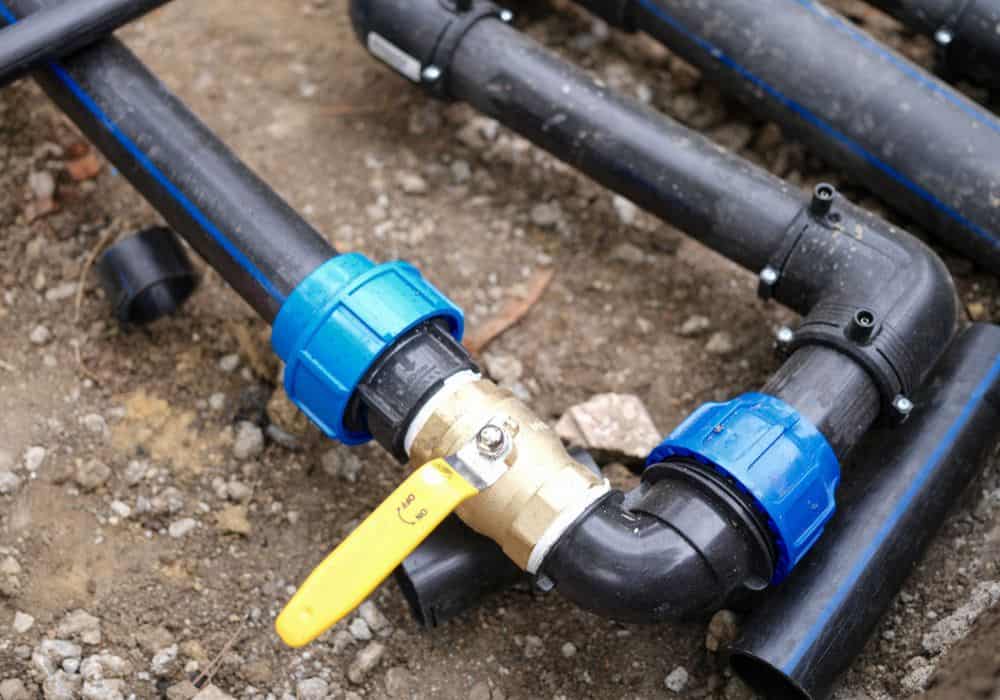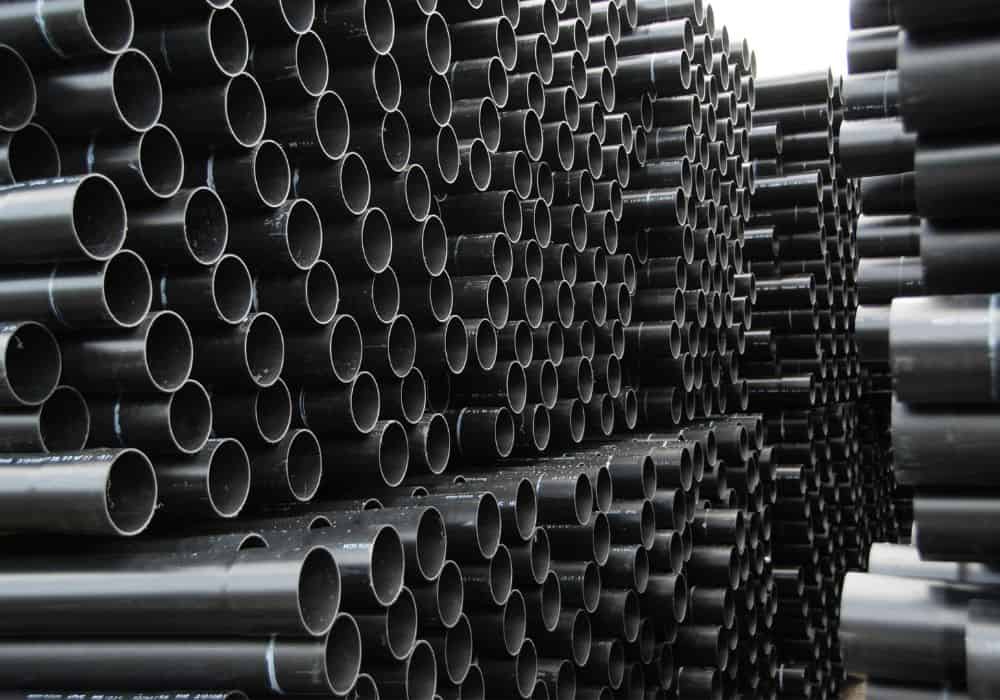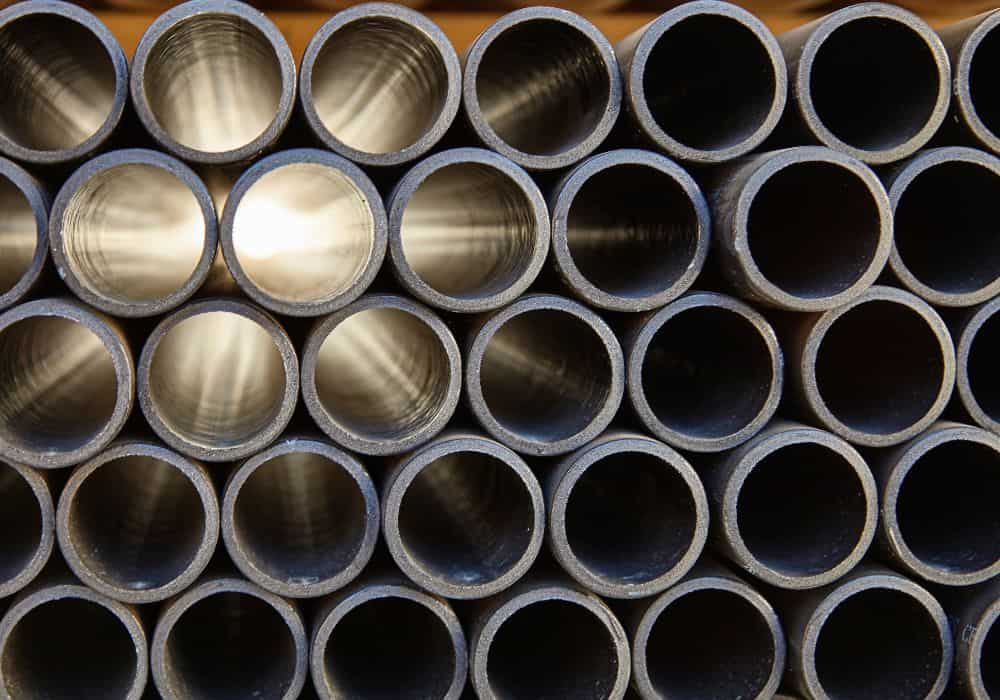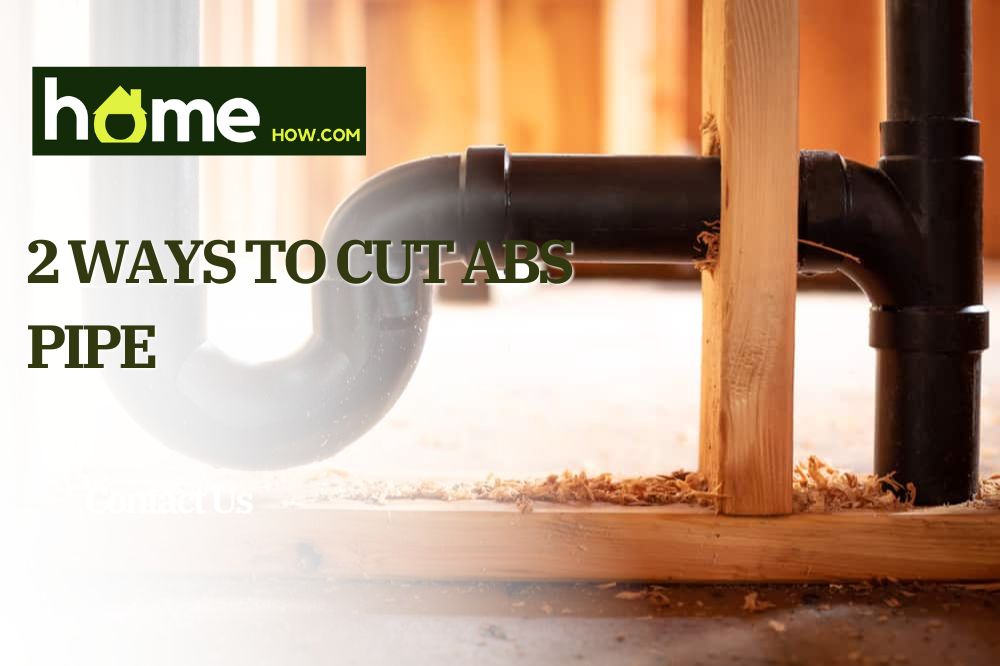If you are doing a plumbing project that requires the use of strong and rigid pipes, then you are likely to use ABS pipes. What lengths of pipe you need will depend on your project so you need to know how to cut ABS pipes to the right length.
In this article, we cover step-by-step instructions for cutting ABS pipes. We have also included information on what ABS pipes are, how they differ from PVC pipes and when to choose ABS pipes.
What is an ABS Pipe?
ABS stands for acrylonitrile butadiene styrene. ABS is a type of plastic pipe that generally comes in black. They can be used as drains, vents, or waste pipes. They are also suitable for sewers and insulating electrical wires.
Because ABS pipes are strong and rigid they are well suited for underground use. They can withstand extremely cold temperatures. Although ABS pipes can be used outside, above ground, they should not be installed where they are exposed to the sun as the light can degrade the plastic.
What is The Difference Between ABS and PVC?
While ABS and PVC pipes are interchangeable in most cases, there are some key differences. One of the main differences is that ABS pipes contain BPA. This makes the more durable. However, BPA has been linked to cancer. According to the Food and Drug Administration, the current levels found are safe.
You can often tell the two types of pipe apart from their color. PVC pipes are usually gray or white while ABS pipes are black. ABS pipes are stronger but PVC pipes are more flexible. PVC pipes also muffle sound better which makes them a more popular choice for indoor plumbing.
The connection process differs for ABS and PVC pipes. With ABS installation, there is only one step to making a connection. They are connected using a special cement that does not need to dry before connecting the pipe. PVC pipes use a primer that has to be applied and fully dried before you can apply the cement.
Should You Use PVC or ABS Pipes?

Whether PVC or ABS is better for your purposes, depends on your project and the local building codes. Sometimes the codes will specify where PVC and BS piping can be used, so before you install ABS pipes, check the regulations. Where no code requirement exists, you can choose the type of pipe you prefer.
Because there is only one installation step, ABS pipes are quicker to install. ABS pipes are durable and perfect if you need to install underground sewers or fixture drains. Just remember to keep them away from the sunlight. If the pipes are in an area exposed to the sun, then you are better off using PVC piping.
How to Cut ABS Pipe?
When you need to cut ABS pipe, you want to do it as quickly and easily as possible to speed up your installation process. Choosing the right method is important and this is slightly different depending on whether you are cutting previously installed pipes or ones that have not been installed yet.
Choosing the right tool for the job is also a key factor, which is why we have included information on the best tools later on in the article.
1. How to Cut Previously Installed ABS Pipe?
Most of the time you will need to cut ABS pipes that have not been installed yet. However, if you are making alterations to, for example, your drainage system, then you may need to cut pre-installed ABS pipes. Follow the steps below to do this safely.
- Step One – Marking The Pipe
Start by marking the ABS pipe where it needs to be cut using a tape measure and a pencil or a wax pen. To help you achieve a smoother cut, you might like to wrap a layer of tape around the circumference of the pipe and then mark your cut line on the tape.
- Step Two – Cutting
Rest the blade of a handsaw on the mark. Use your thumb on one side of the saw to help you guide the blade. Apply pressure on the saw and move it slowly across the pipe in a backward and forward motion. When you feel that the blade cuts into the pipe, remove your thumb. Keep the saw in motion until you achieve a perpendicular cut through the pipe.
- Step Three – Cleaning the Cut
If you used the tape, you should have achieved a cleaner cut. However, you should still remove any burring from the cut edge. You can remove burrs and plastic fragments using a utility knife, a file, or sandpaper.

2. How to Cut ABS Pipes That Have Not Been Installed?
To securely cut ABS pipes before installation, you can follow the steps below. Following the right steps will also ensure you get as straight a cut as possible which will give you the best possible fit.
- Step One – Measuring and Marking
Use the tape measure to measure the length of pipe you need and mark the pipe surface where you want to cut with a pencil or wax pen. To ensure the best possible cut, it is always best to secure the pipe with a clamp, miter box, or a vise to keep it from moving out of place during cutting.
However, if you do not have access to tools that will help you secure the pipe in place, you can hold it down with your body weight. It is always best to use a securing tool as it is safer and will give you more accurate results.
- Step Two – Cutting
Once you have secured the pipe in place, position the blade of your saw on the mark. Apply even pressure to move the saw backward and forwards until it cuts through the whole circumference of the pipe.
- Step Three – Cleaning The Cut
Just like with the pre-installed ABS pipe, it is important to clean the cut before you install the pipe. Use sandpaper, a file, or even a utility knife to tidy the edge until it is smooth.
Which Tool Should You Choose?

You can make your DIY plumbing project a lot easier if you use the correct tool to cut your ABS pipe. There are several types of pipe cutters available as well as general-purpose tools that can be used to cut pipes as well as other materials.
1. Copper Tubing Cutters
Don’t let the name mislead you as this tool can be used to cut ABS pipe as well as copper pipes. They are specialized tools that come in many shapes and sizes to fit different diameters. The tubing cutter grips the pipe between rollers and has a sharp cutting wheel that rotates around the pipe.
If you choose tubing cutters to cut your ABS pipe, make sure they are copper rather than PVC tubing cutters. The ABS pipe is too brittle to be cut with a PVC pipe cutter.
2. ABS Saw
Most professionals would recommend using a type of coarse saw for cutting ABS pipe. While there are saws designed for cutting ABS, it is not necessary to purchase one. It is fine to use any type of saw, including a hacksaw. The saw will leave large burrs on the pipe, so remember to clean off the inside and outside of the pipe when you have finished cutting.
3. All-Purpose Saws
If you only need to cut a few pipes or only do plumbing work infrequently, you don’t need to invest in a special saw or cutter. Most saws will work on ABS pipes. Below are details on saws you can use in addition to ABS saws or hacksaws.
- Crosscut hand saw: works well when cutting rigid plastic pipe, such as ABS.
- Jigsaw: as long as you have the right blade for your jigsaw, you can cut pipes up to 1.5 inches in diameter. Wood-cutting blades are best for ABS pipes.
- A power miter saw: this saw will give you perfectly square pipe ends when working with an ABS pipe. Again, you will need to choose a saw blade that cuts wood.
- Reciprocating saw: more versatile than jigsaws, this saw can be used for pipes with larger-diameter pipes. Select a wood-cutting blade to cut the ABS pipe.
Conclusion
Now you know how to cut ABS pipes whether they are already installed or before you install them. The best methods and tools will give you the best results and ensure that the joints fit together perfectly. For anyone who would like to see a visual demonstration of cutting ABS pipes, we recommend this YouTube video from Gabe’s Hacks.
We hope this article has helped you with your question on how to cut ABS pipe. If there is anything else you would like to know about this topic, you can write your questions in the comments section.
